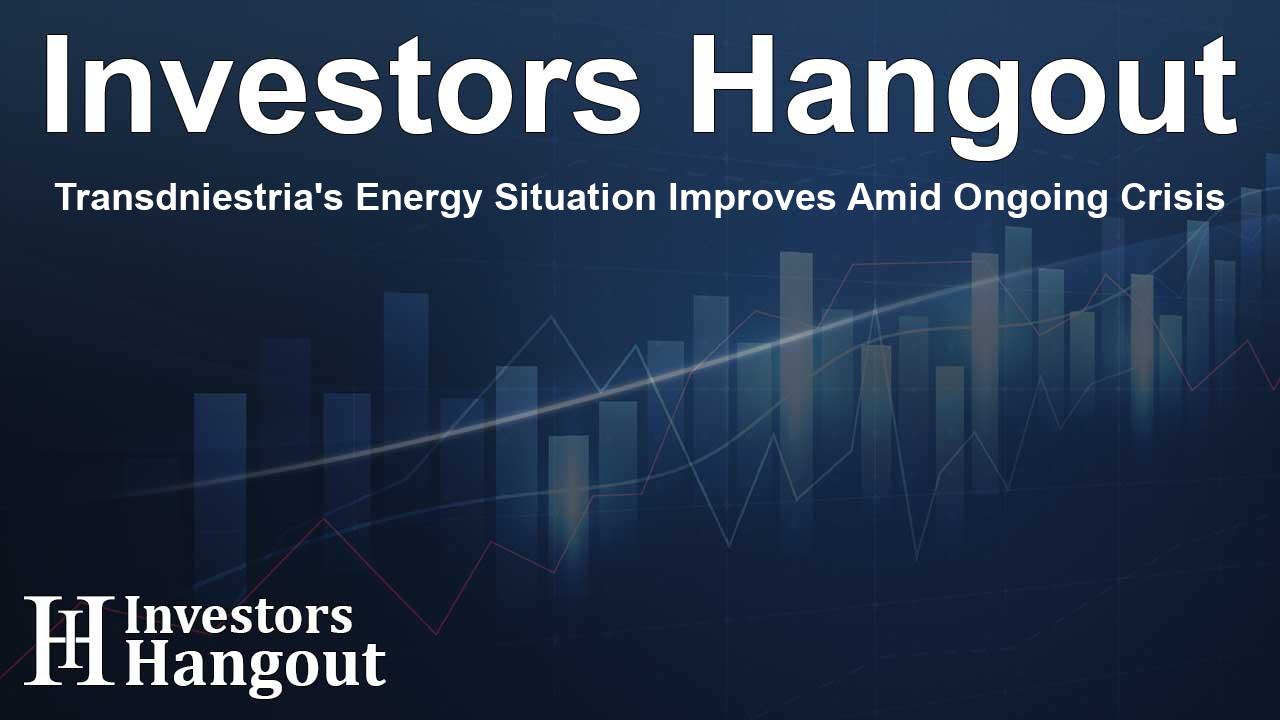Transdniestria's Energy Situation Improves Amid Ongoing Crisis

Transdniestria's Energy Improvements
Recently, authorities in the separatist region of Transdniestria have announced significant improvements in their energy situation, particularly in reducing the duration of rolling blackouts. This progress comes as the region navigates the complexities of an energy crisis spurred by a halt in Russian gas supplies.
Background on Energy Challenges
The crisis erupted when Ukraine, engaged in conflict with Russia, decided not to extend a crucial gas transit agreement. This decision has left Transdniestria, which separated from Moldova during the last days of the Soviet Union, reliant entirely on Russian gas that travels through Ukraine. A statement from Gazprom indicated that, due to alleged unpaid bills by Moldova amounting to $709 million, it would cease supplying gas through alternative routes.
Government Responses and Measures
In light of these developments, Moldova's pro-European government has vehemently criticized Russia, claiming it is to blame for the ongoing energy crisis. The Moldovan leadership argues that Russia's actions are designed to create instability within the country, especially as parliamentary elections approach. Amid these tensions, Transdniestrian officials revealed that rolling blackouts would now be reduced to three hours per day, a significant improvement from eight-hour outages seen earlier.
Strategies to Manage Energy Shortages
To conserve energy, many factories in Transdniestria are adapting by shifting operations to nighttime hours when energy demand is lower. However, this strategy has its drawbacks, as some plants, such as a cement manufacturer in Rybnitsa, have been forced to close. Additionally, other critical operations, including a steel mill, have also halted production due to the energy shortage.
Moldovan Authority's Stance on Russia
The Moldovan government, through spokesperson Daniel Voda, has maintained that any potential for Russia to reverse its gas cutoff does not absolve the country from its culpability in the crisis. He emphasized that Russia’s manipulations are detrimental, turning citizens into hostages by cutting off essential resources.
Concerns Over Stability and Security
Moldova contends that these energy struggles are not merely logistical issues but part of a broader tactic by Russia to destabilize the region. President Maia Sandu has suggested that alternative supply routes, such as the Turkstream pipeline through Turkey, may be available for supplying gas to Transdniestria, highlighting the need for sustainable energy solutions.
Future Prospects for Transdniestria
The ongoing energy situation in Transdniestria remains critical, with authorities striving to stabilize their energy needs as they face external pressures. The collaborative offers made by the Moldovan government to aid in mitigating these power shortages have not been formally accepted by Transdniestria's leadership yet, indicating a degree of tension in the relationship between the two entities.
The region still hosts a contingent of 1,500 Russian troops, a holdover from the brief conflict with Moldova in the early '90s, which adds another layer of complexity to the regional dynamics. As Transdniestria continues to navigate its energy crisis, monitoring future developments will be essential, especially in the context of broader geopolitical concerns.
Frequently Asked Questions
What measures have been taken to reduce blackouts in Transdniestria?
Authorities have implemented energy conservation strategies, allowing them to reduce rolling blackouts from eight hours to three hours per day.
How has the conflict in Ukraine affected Transdniestria's gas supply?
The ongoing conflict led Ukraine to discontinue a vital gas transit agreement with Transdniestria, impacting the region's energy availability.
What is the Moldovan government's perspective on the energy crisis?
The Moldovan government holds Russia responsible for the crisis, asserting that its actions are intended to destabilize the country.
Are there alternative gas supply routes for Transdniestria?
President Maia Sandu has pointed to the Turkstream pipeline as a potential alternative route for gas supplies to Transdniestria.
What is the historical context of Transdniestria's separation from Moldova?
Transdniestria became a separate entity after the dissolution of the Soviet Union in the early 1990s, following a brief war with Moldovan forces.
About The Author
Contact Olivia Taylor privately here. Or send an email with ATTN: Olivia Taylor as the subject to contact@investorshangout.com.
About Investors Hangout
Investors Hangout is a leading online stock forum for financial discussion and learning, offering a wide range of free tools and resources. It draws in traders of all levels, who exchange market knowledge, investigate trading tactics, and keep an eye on industry developments in real time. Featuring financial articles, stock message boards, quotes, charts, company profiles, and live news updates. Through cooperative learning and a wealth of informational resources, it helps users from novices creating their first portfolios to experts honing their techniques. Join Investors Hangout today: https://investorshangout.com/
The content of this article is based on factual, publicly available information and does not represent legal, financial, or investment advice. Investors Hangout does not offer financial advice, and the author is not a licensed financial advisor. Consult a qualified advisor before making any financial or investment decisions based on this article. This article should not be considered advice to purchase, sell, or hold any securities or other investments. If any of the material provided here is inaccurate, please contact us for corrections.
